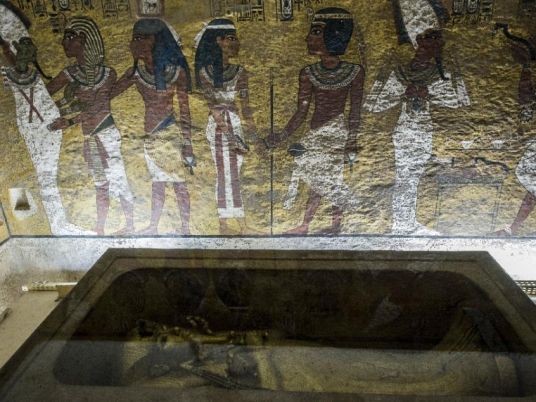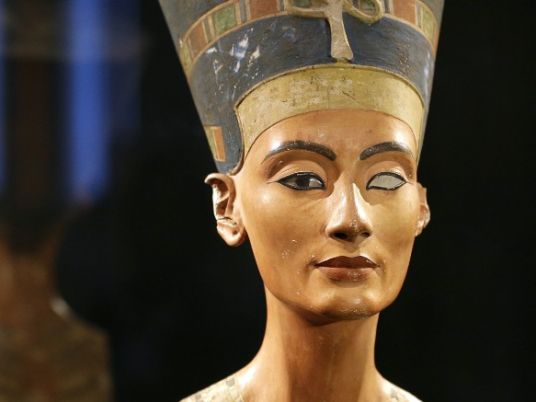
Chances are high that the tomb of Ancient Egypt's boy-king Tutankhamun has passages to a hidden chamber, which may be the last resting place of Queen Nefertiti, and new evidence from the site will go to Japan for analysis, experts said on Saturday.
Nefertiti, thought to have been Tutankhamun's stepmother, died in the 14th century BC, and discovery of her final resting place would be the most remarkable Egyptian archaelogical find this century.
British Egyptologist Nicholas Reeves announced plans for further investigations at a news conference with Egyptian Antiquities Minister Mamdouh el-Damati, who said data would be taken to Japan for study and that chances were high that a chamber exists.
"We said earlier there was a 60 percent chance there is something behind the walls. But now after the initial reading of the scans, we are saying now its 90 percent likely there is something behind the walls," said Damati.
Discovery of Nefertiti, whose chiseled cheek-bones and regal beauty were immortalized in a 3,300-year old bust now in a Berlin museum, would shed fresh light on what remains a mysterious period of Egyptian history despite frenzied international interest.
"There is, in fact, an empty space behind the wall based on radar, which is very accurate, there is no doubt. We cannot say at this point however the size of the space behind the wall," Japanese radar specialist Hirokatsu Watanabe told the news conference.
"We have the data but we must analyze it to understand. But we are working in the Valley of the Kings, so we are expecting to find antiquities behind the wall."
Reeves said in October that he believed Tutankhamun's mausoleum was originally occupied by Nefertiti and that she had lain undisturbed behind what he believes is a partition wall for over 3,000 years.
King Tut, as he is affectionately known, died around 1323 BC. His intact tomb, complete with his famous golden burial mask, was discovered in the Valley of the Kings in 1922 by another British Egyptologist, Howard Carter.
Experts have long sought to understand why Tut's tomb was smaller than that of other pharaohs and why its shape was more in keeping with that of the Egyptian queens of the time.
Egyptologists remain uncertain over where Nefertiti died and was buried. She was long believed to have passed away during her husband's reign, suggesting she could be buried in Amarna, where her bust was found in 1912.
More recently, most experts, including Reeves, have come to believe she outlived Akhenaten, who may have been Tut's father, but changed her name and may have briefly ruled Egypt.



